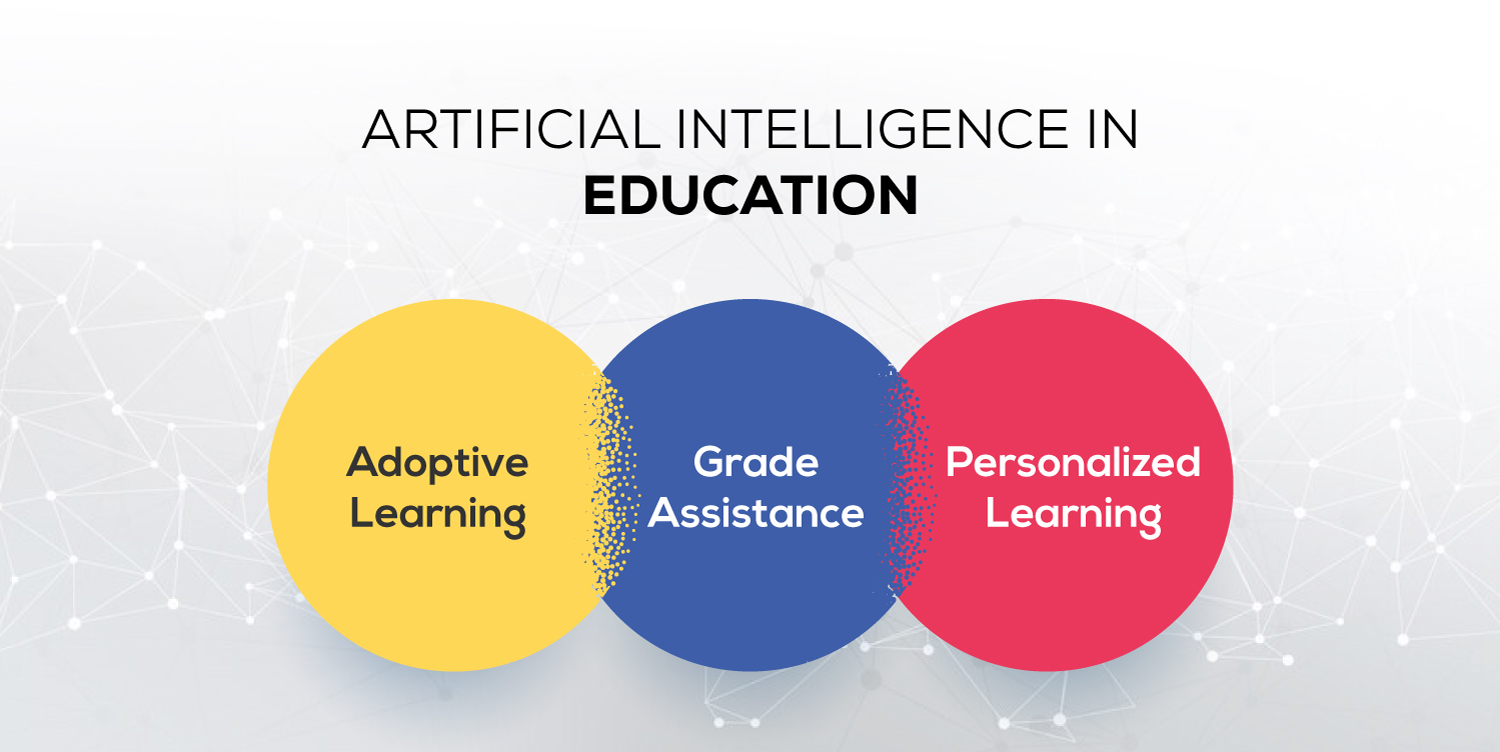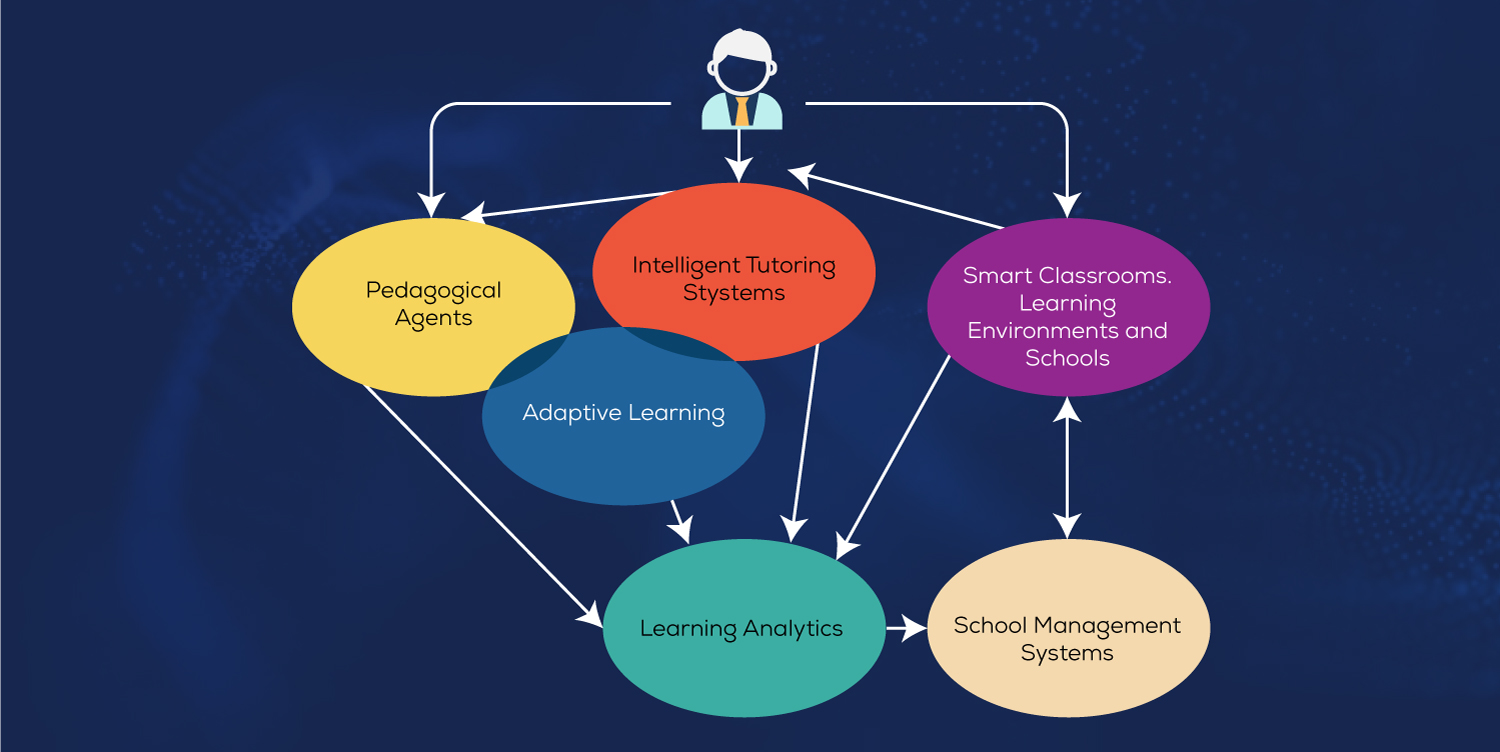Empowering Educators: Exploring 5 Essential AI Tools for Teaching Success
Artificial Intelligence (AI) is a transformative force, offering promise and concern. Enthusiasts envision AI-driven classrooms revolutionizing learning experiences, while some educators grapple with uncertainties about potential consequences.
Whether you’re an eager early adopter, a cautious observer, or a navigating ambivalent, this guide addresses your needs. It is a comprehensive resource, bridging the gap between AI terminology, practical tools, and informed decision-making for educators. Embrace the future of education with confidence and insight. Artificial Intelligence (AI) encompasses machines simulating human cognitive functions and performing tasks requiring human-like intelligence, such as perception, reasoning, learning, problem-solving, and natural language understanding. In education, AI is applied to tasks ranging from lesson planning and administrative automation to personalized learning and surveillance.
Artificial Intelligence In The Classroom-
Artificial intelligence in the Classroom involves the integration of AI technologies and tools in educational settings to enhance teacher efficiency and elevate the learning experience for students. Teachers increasingly leverage AI to revolutionize traditional teaching methods, staying at the forefront of educational innovation.
AI tools have become invaluable aids for educators, serving as both a lifeline for teachers and an advanced support system for students. The integration of AI into the education sector has transcended the realm of science fiction, ushering in a new era that holds the potential to transform traditional teaching methods.
In the contemporary educational landscape, AI tools empower educators to deliver personalized learning experiences, efficiently manage administrative tasks, and significantly enhance student engagement. It marks a pivotal shift towards educational methodologies prioritizing efficiency, accuracy, and adaptability. AI tools cater to diverse educational needs, from aiding lesson planning and content creation to facilitating student assessment and streamlining classroom management.
Each tool featured in this exploration is thoughtfully categorized to address specific requirements, ensuring educators can quickly identify and integrate the most relevant AI solutions into their teaching practices. This curated selection aims to be a valuable resource, empowering teachers and students to pursue enhanced education.

Advantages of Using AI in Teaching:
Time Efficiency with AI Assistants:
- AI streamlines administrative tasks, allowing teachers to allocate more time to meaningful teaching activities.
- Reduces the burden of manual grading, freeing educators to focus on student interactions and content creation.
- AI admin assistants and AI-powered Google Classroom automate repetitive administrative tasks, allowing teachers to focus more on teaching and student interactions.
Streamlined workflows contribute to time efficiency and enhanced productivity.
Optimized Teaching Strategies:
- Classroom AI enables educators to refine and optimize teaching strategies by providing real-time student performance and engagement insights.
- Teachers can adapt their approaches based on data-driven analytics, ensuring a more effective and personalized learning experience.
Personalized Learning:
- AI tools like Gradescope and Formative AI enable teachers to track individual student progress.
- Analyzes strengths and weaknesses, facilitating the customization of lesson plans to cater to each student’s needs.
- Ensures a tailored approach to education, enhancing the chances of academic success for every student.
Increased Engagement:
- AI enhances the overall engagement and interest of students in the learning process.
- AI makes learning more dynamic and enjoyable through interactive elements and gamified content.
Data-Driven Insights:
- AI tools provide comprehensive data analytics on student performance, behaviour, and engagement.
- Identifies learning gaps and areas for improvement, enabling educators to make informed decisions.
- Supports data-driven teaching strategies, fostering a more effective and targeted approach to education.
Efficient Content Creation:
- AI-powered tools like SlidesAI.io and QuillBot assist in creating visually appealing presentations and paraphrasing content.
- Facilitates quick and efficient content creation, saving educators time and effort.
- Enables the generation of diverse teaching materials, worksheets, and assessments without reinventing the wheel.
Enhanced Professional Development:
- AI tools offer opportunities for continuous professional development.
- Keeps educators updated on evolving technologies and methodologies in education.
- AI tools encourage a culture of lifelong learning among teachers.
Adaptive Learning:
- AI adapts to individual learning styles and preferences, providing a personalized learning experience.
- AI tools offer adaptive content and assessments based on real-time performance data.
- Catering to diverse learning needs enhances the effectiveness of teaching.
Efficient Assessment And Feedback:
- Chronicle Cloud revolutionizes the assessment process.
- QuestionWell and Formative AI Provide instant feedback, generate personalized quizzes, and help track student progress efficiently.
- The AI enhances the assessment and feedback loop, improving student learning outcomes.
- AI grading tools like Gradescope, SmartGrade, and Formative AI automate the grading process, providing quick and precise evaluations of student submissions.
- Personalized feedback and identification of strengths and weaknesses contribute to more effective assessments.
Global Collaboration:
- AI facilitates global collaboration and connectivity in education.
- It enables educators and students to engage with diverse perspectives and resources worldwide.
- It enhances cross-cultural understanding and collaboration in the learning environment.
Criteria for Selecting AI Tools:
- Teachers are advised to consider criteria such as bias and fairness, data privacy and security, customization and adaptability, integration and compatibility, scalability, support, user experience, accessibility features, cost-effectiveness, research and evidence, and pedagogical alignment when selecting AI tools.

Benefits of AI in Education:
For educators considering the incorporation of AI into their teaching toolkit, the benefits are numerous:
- Efficiency Boost: AI technology streamlines administrative tasks, allowing educators more time for meaningful interactions with students and dynamic lesson planning.
- Tailored Educational Experiences: AI enables customized learning experiences by analyzing performance data and addressing individual strengths and areas for improvement.
- Enhanced Student Involvement: AI tools like ClassPoint AI incorporate interactive elements and gamification, keeping students engaged in their education.
- Insightful Analytics: AI provides valuable insights into student performance and engagement, allowing educators to refine their teaching methods to suit individual student needs.
Integrating innovative Artificial Intelligence (AI)-driven teaching aides has become a transformative force, reshaping traditional teaching methodologies. As educators navigate the fast-evolving landscape of pedagogy, the adoption of Innovative Teaching Techniques has emerged as a pivotal approach, empowering instructors to explore and implement cutting-edge tools seamlessly into their teaching practices. This paradigm shift enhances the overall educational experience and fosters creativity and adaptability among educators and learners.
One of the key areas where AI is making a substantial impact is in creating and delivering instructional content.
AI tools empower teachers to create-
Video Content:
- AI-powered tools like Pictory AI, Descript, and Speechify streamline the process of creating engaging video content for lessons.
- Simplifies video editing, making it accessible even for teachers without extensive video editing skills.
Lesson Plans:
- AI tools for lesson planning, such as Education CoPilot, Nolej, and LessonPlans.AI, assist in creating well-structured lesson outlines and materials.
- Enables teachers to plan creative and engaging lessons effortlessly.
Quizzes:
- AI-powered quiz generators like ClassPoint AI, QuizGecko, and ExamSoft automate the quiz creation process, saving time and effort for teachers.
- AI tools offer a variety of question types and customization options.
PowerPoint Presentations:
- AI PowerPoint generators such as Tome AI, SlidesGo+Wepik, and ClassPoint AI assist in creating aesthetically pleasing and interactive presentations.
- Reduces the time spent on presentation creation, allowing teachers to focus on delivering impactful messages.
Recommended AI Tools:
- Teachers recommend tools like Reclaim.ai, AskYourPDF, DeepL Translate, Neuroflash, Monic.ai, Steve.ai, Writesonic, and Conker for various educational needs.
- These tools cover time management, document conversion, translation, chatbot functionality, learning assistance, video generation, writing, and quiz creation.
Integrating AI Tools into the Curriculum-
Integrating AI tools into the curriculum should be a collaborative effort that complements and enhances existing instructional structures. Educators can leverage these tools in various capacities, such as incorporating them into lesson planning, as teaching assistants for personalized learning paths, or employing them to generate new and interactive content aligned with curriculum standards.
As education evolves to meet the demands of the digital age, integrating Artificial Intelligence (AI) tools into the curriculum has emerged as a transformative initiative. This process, however, requires a collaborative and strategic effort to seamlessly complement and enhance existing instructional structures. Educators today have the opportunity to harness the power of AI in multifaceted ways, incorporating these tools into lesson planning, utilizing them as teaching assistants for personalized learning paths, and employing them to generate new, interactive content aligned with curriculum standards.
As educators incorporate AI tools into their teaching repertoire, understanding these tools’ functionalities and potential applications becomes paramount.
Let us look at a few AI tools and their functions that align with the evolving needs of the curriculum but also equip educators with powerful resources to elevate the quality and efficiency of their teaching practice.
Special Features:
Primarily a paraphrasing tool, QuillBot goes beyond by incorporating grammar checking, plagiarism checking, and citation generation features. This comprehensive set of tools ensures the creation of high-quality content while maintaining academic integrity.
Pricing:
QuillBot offers a free plan, and the premium plan, priced at USD 9.95 monthly, provides unlimited words in the paraphraser, advanced grammar rewrite, plagiarism checker, tone detection, and more. The affordable pricing plans and free trial options make it accessible for teachers.
PowerPoint Speaker Coach:
Special Features:
PowerPoint Speaker Coach analyzes the pace, tone, and emphasis of the teacher’s voice during presentations, offering constructive suggestions for improvement. The tool provides a rehearsal report encompassing feedback on pace, the use of fillers, sensitive phrases, total time, and areas for improvement.
Pricing:
PowerPoint Speaker Coach offers free and paid versions, with the paid version offering more detailed analysis and feedback for enhanced presentation delivery.
Special Features:
SlidesAI uses advanced AI to generate visually appealing presentations instantly based on text input. It suggests relevant images and graphics, streamlining the creation of engaging and visually appealing slides. Integration with Google Workspace and pre-made templates adds to its versatility.
Pricing:
SlidesAI is free to use, with paid plans starting from USD 10.60 monthly, offering additional features like high-quality format exports and access to premium templates.
Special Features:
Gradescope, an AI-powered grading and assessment tool, enhances efficiency in grading assignments and exams. It includes a built-in plagiarism checker and detailed analytics for comprehensive insights into student performance.
Pricing:
Gradescope offers free and paid versions, with the paid version providing additional features such as custom rubrics, integration with other tools, and collaborative functionalities.
An innovative AI tool that generates a limitless supply of questions, learning objectives, and multiple-choice questions based on a given reading, fostering a dynamic and evolving assessment environment.
Conclusion:
Integrating AI in education brings many benefits, from optimized teaching strategies and time efficiency to enhanced assessment methods and creative content creation. By leveraging AI tools, educators can elevate the overall learning experience for students, making education more personalized, engaging, and effective.
These transformative tools elevate the teaching experience by providing individualized feedback, enhancing writing skills, supporting neurodivergent learners, and bringing history to life. In doing so, they enrich the learning environment and make education more accessible and engaging for all students.
AI tools in education promise personalized learning experiences, streamlined administrative tasks, and improved student engagement. Educators can create more engaging, inclusive, and effective learning environments by adopting tools tailored to their needs and goals.
In conclusion, integrating AI tools offers a transformative leap forward in education technology. These tools not only streamline various aspects of teaching and learning but also pave the way for innovative methods of student engagement and personalized education. As we embrace these advancements, the educational landscape is poised for a transformation, making learning more efficient, interactive, and tailored to individual student needs.

